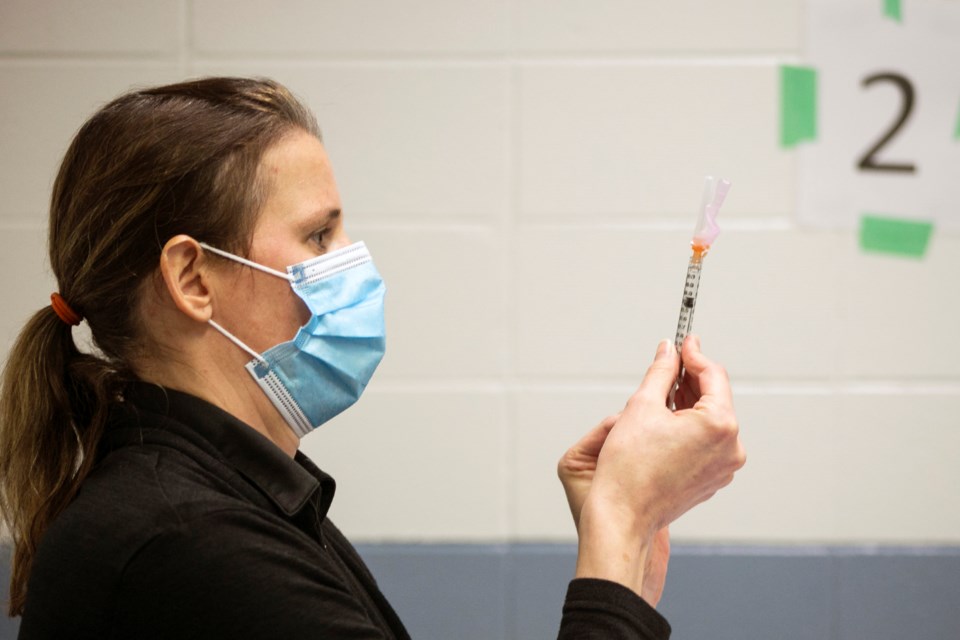While more than 85 per cent of Guelph residents have received a first dose, Wellington County’s rate is lagging behind at just over 73 per cent based on data from Friday morning.
Therefore, Wellington-Dufferin-Guelph Public Health (WDGPH) is taking a more targeted approach to increase the first-dose vaccination rate in Wellington County.
Dr. Matthew Tenenbaum, associate medical officer of health, acknowledged in a phone interview that not every area in their jurisdiction has seen the same uptake in vaccination.
However, he said the rate is going up in Wellington County, which is a good sign, but vaccination in rural areas presents a different challenge depending on how far someone is from an urban centre.
Tennenbaum said a big barrier is how long it takes to get to a mass vaccination clinic or any location where you can be vaccinated, which can be quite far depending on how rural you live.
“Obviously we want to make sure getting the vaccine is as convenient as possible ... especially to reach those last 25 to 30 per cent of people,” Tenenbaum said.
Therefore, public health is using data to more specifically target pockets of Wellington County that are seeing lower rates by offering a multitude of options for getting vaccinated.
For example, Tenenbaum said they have seen a significant number of vaccines going to primary care and pharmacies in Wellington County as that is often an easier option compared to a mass clinic.
“For some people, they want to go somewhere they have an established relationship with –their family doctor, nurse practitioner or their pharmacist … and it’s something they can do while they’re there anyways,” Tenenbaum said. “Not everyone is willing or able to go out to a mass vaccination clinic, that model doesn’t work for everyone.”
Tenenbaum declined to share any specific areas where vaccination rates are lower than others to avoid stigmatizing or pointing the finger at any community but explained WDGPH is using data to map out where the rate is low to develop a more targeted approach to increase access.
“We use the best data we have from our vaccination information to drill down to low level of geography and to think about how we can be creative and target people there to make it easy and encourage uptake,” Tenenbaum said.
“Think about if I’m someone who lives in this community, of this age group, where am I going to be? Where would it be convenient for me to access a vaccine?”
Reaching this last percentage is vital, Tenenbaum said, particularly with the more transmissible delta variant working its way in the community.
“If we have pockets in our community where the vaccination rate isn’t high, that’s a risk area from our perspective,” Tenenbaum said. “Those are areas where COVID can spread.”
Some people have been eager and willing to get vaccinated, which Tenenbaum said is great but it’s also important to reach those who are hesitant or resistant.
Again, this means changing the approach to sharing reasons for vaccination beyond just protecting yourself and the community.
“I think it’s going to be an increasingly normalized thing that if you want to do this activity that is high-risk, you have to be vaccinated,” he said. “We want to make sure people are able to engage in those things that are meaningful to them and that, in many cases, will mean getting vaccinated.”
He attributed reopening and a sense of normalcy locally and provincially to an increase in vaccination rates. Tenenbaum stressed the importance of building on these gains by getting more of the community vaccinated to eliminate the threat of COVID.
“The pandemic is not going to be a threat to us if everyone around us is vaccinated,” Tenenbaum said.
Until that time, Tenenbaum said COVID can still make people sick or worse and the risk for another wave of cases remains.
“It is kind of all for one, one for all effort because we are all in this together and we all have a role to play in reducing the risk in our community,” Tenenbaum said.
